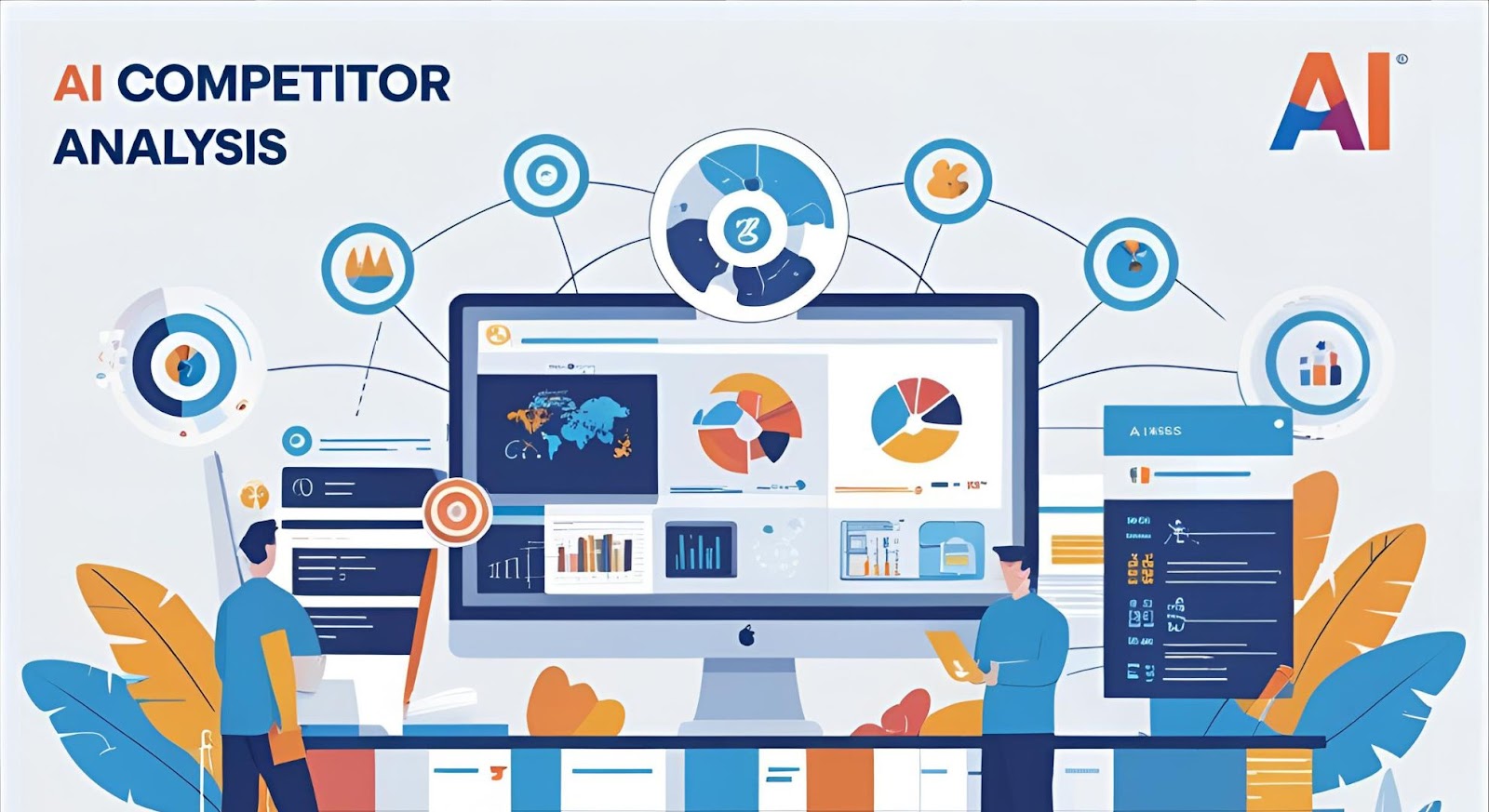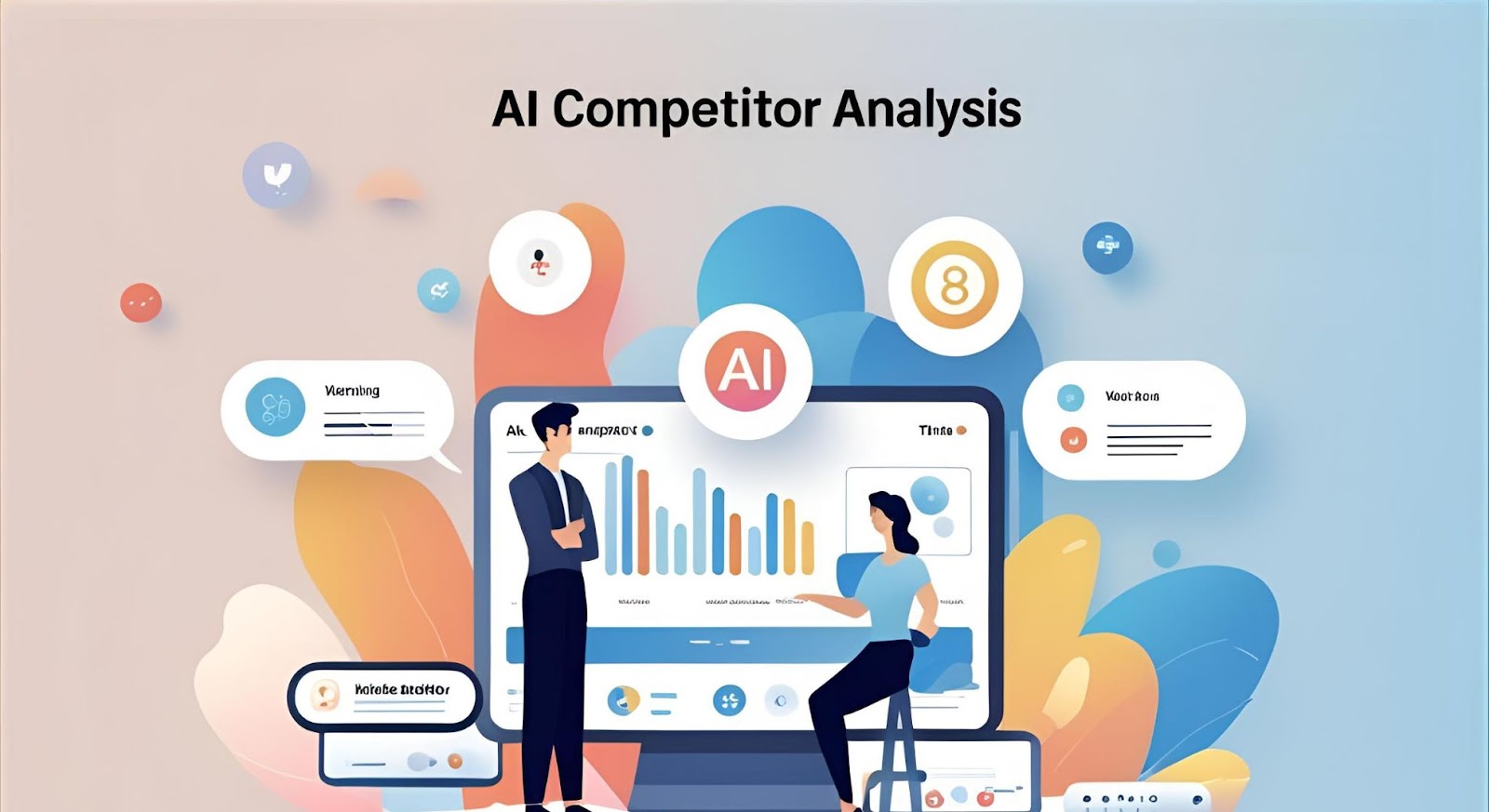AI competitor analysis has evolved beyond simple keyword tracking and basic market analysis into sophisticated intelligence warfare where artificial intelligence and machine learning algorithms determine market dominance. Modern businesses face increasingly complex competitive landscapes where traditional analysis methods fail to capture the nuanced strategies, emerging threats, and hidden opportunities that determine local search success. The integration of AI-powered tools into competitive analysis workflows enables unprecedented insights into competitor behavior patterns, strategy effectiveness, and market positioning that manual analysis simply cannot achieve at scale.
The rapid advancement of artificial intelligence technologies has revolutionized how businesses gather, analyze, and act upon competitive intelligence in local markets. Machine learning algorithms can process vast amounts of competitor data, identify patterns invisible to human analysts, and predict competitive moves with remarkable accuracy. This technological evolution demands new approaches to competitive analysis that leverage AI capabilities while maintaining strategic focus on actionable insights that drive measurable business results and sustainable competitive advantages.
Key Takeaways
• AI-powered monitoring systems provide real-time competitive intelligence across multiple channels, enabling rapid response to competitor strategy changes and market opportunities
• Machine learning pattern recognition reveals hidden competitor strategies and emerging trends that traditional analysis methods cannot detect or quantify effectively
• Automated data collection and analysis eliminates manual research limitations while providing comprehensive competitive insights across local markets and industry segments
• Predictive analytics capabilities forecast competitor moves and market changes, enabling proactive strategy development rather than reactive competitive responses
• Multi-dimensional analysis integration combines technical SEO, content strategy, reputation management, and local citation data for comprehensive competitive understanding
• Actionable intelligence transformation converts complex data streams into strategic recommendations that directly impact local SEO performance and market positioning
Overview
AI-powered competitor analysis represents the next evolution in local SEO intelligence gathering, combining advanced machine learning algorithms with comprehensive data collection systems to provide unprecedented insights into competitive landscapes. This guide explores cutting-edge tools, methodologies, and strategic frameworks that enable businesses to gain decisive competitive advantages through intelligent analysis of competitor activities, market trends, and optimization opportunities that traditional methods cannot identify or quantify effectively.
Understanding AI-Driven Competitive Intelligence
Traditional competitor analysis relies on manual data collection, periodic reviews, and surface-level insights that provide limited understanding of competitive strategies and market dynamics. AI-powered systems fundamentally transform this approach by continuously monitoring competitor activities across multiple channels, analyzing patterns in real-time, and identifying strategic opportunities that emerge from complex data relationships. Machine learning algorithms excel at processing vast amounts of competitive data while identifying subtle patterns and correlations that human analysts typically miss.

The sophistication of modern AI tools enables analysis of competitor behavior across technical SEO implementation, content strategy effectiveness, local citation development, review generation patterns, and customer engagement approaches. These systems can track thousands of data points simultaneously while providing insights into which competitive strategies generate actual results versus those that merely appear impressive on surface-level analysis.
Machine Learning Pattern Recognition
Advanced pattern recognition capabilities enable AI systems to identify successful competitor strategies by analyzing correlation between optimization efforts and performance outcomes. These systems can determine which technical improvements, content types, or local optimization tactics generate meaningful results rather than relying on assumptions about best practices. Pattern recognition extends to seasonal trends, market response patterns, and competitive positioning strategies that influence long-term success.
Machine learning algorithms continuously improve their analysis capabilities by learning from historical data patterns and outcome relationships. This evolutionary improvement means AI-powered competitive analysis becomes more accurate and insightful over time, providing increasingly sophisticated strategic recommendations based on proven success patterns rather than theoretical best practices.
Essential AI-Powered Analysis Tools
BrightEdge represents one of the most sophisticated AI-powered SEO platforms, offering advanced competitive intelligence capabilities that leverage machine learning algorithms to identify optimization opportunities and competitive threats. The platform’s ContentIQ feature analyzes competitor content strategies while providing AI-driven recommendations for content development that addresses competitive gaps and market opportunities. Real-time competitive monitoring enables immediate notification of competitor strategy changes, new content publication, and ranking improvements.
SEMrush’s AI-powered competitive analysis tools provide comprehensive insights into competitor organic search strategies, paid advertising approaches, and content marketing effectiveness. The platform’s machine learning algorithms analyze competitor keyword strategies while identifying gaps and opportunities that traditional keyword research methods cannot detect. Competitive positioning analysis reveals how competitors achieve rankings for high-value local keywords while providing strategic recommendations for displacement strategies.
Ahrefs utilizes artificial intelligence to enhance competitive backlink analysis, content gap identification, and keyword opportunity discovery. The platform’s machine learning capabilities analyze competitor link building strategies while identifying high-value prospects that competitors have successfully leveraged. Content Explorer features use AI to identify trending topics and successful content formats within specific local markets and industry segments.
Advanced Monitoring and Alert Systems
AI-powered monitoring systems provide real-time alerts about competitor activities including new content publication, technical improvements, local citation acquisition, and ranking changes. These systems eliminate the need for manual competitive monitoring while ensuring immediate awareness of competitive threats and opportunities. Customizable alert parameters enable focus on specific competitive activities that align with business objectives and strategic priorities.
Automated competitive reporting combines data from multiple sources while using AI algorithms to identify the most significant competitive developments and strategic implications. These reports highlight actionable insights rather than overwhelming users with raw data, enabling efficient decision-making and strategic response development.
Local Market Intelligence Gathering
AI-powered local market analysis extends beyond individual competitor monitoring to provide comprehensive insights into market dynamics, consumer behavior patterns, and competitive positioning opportunities. Machine learning algorithms analyze local search trends, seasonal patterns, and consumer intent signals to identify optimal positioning strategies and market entry opportunities. This analysis includes assessment of market saturation, competitive intensity, and growth potential across different geographic segments.

Geographic competitive analysis utilizing AI tools reveals performance variations across different local markets while identifying expansion opportunities and competitive vulnerabilities. These systems can analyze how the same competitors perform differently across various geographic markets, revealing strategic insights about local market dynamics and optimization approaches that generate superior results in specific areas.
Consumer Behavior Pattern Analysis
AI systems excel at analyzing consumer behavior patterns that influence local search performance including search timing, query evolution, and conversion path analysis. Machine learning algorithms identify how consumer search behavior varies across different local markets while revealing opportunities for strategic positioning that aligns with actual user intent and decision-making processes.
Seasonal trend analysis powered by artificial intelligence provides deeper insights into how competitive landscapes change throughout the year. These systems identify not just what changes occur but why they happen and how businesses can position themselves to capitalize on seasonal opportunities while defending against seasonal competitive threats.
Technical SEO Competitive Intelligence
AI-powered technical SEO analysis provides unprecedented insights into competitor technical optimization strategies, implementation quality, and performance outcomes. Machine learning algorithms can analyze competitor website architecture, page speed optimization, mobile performance, and technical implementation quality while identifying specific technical advantages that contribute to superior search performance. This analysis extends to schema markup implementation, internal linking strategies, and site structure optimization approaches.
Automated technical auditing capabilities enable continuous monitoring of competitor technical improvements while identifying optimization opportunities that competitors have not yet discovered or implemented. These systems can predict which technical optimizations will generate the greatest competitive advantages based on analysis of historical performance data and current market conditions.
Core Web Vitals and Performance Analysis
AI-powered performance monitoring tracks competitor Core Web Vitals scores, mobile optimization quality, and user experience metrics that directly impact local search rankings. Machine learning algorithms identify which performance improvements generate measurable ranking benefits while providing specific recommendations for technical optimizations that can create competitive advantages.
Technical implementation analysis reveals how competitors achieve superior technical performance while identifying gaps in their optimization approaches that create opportunities for competitive displacement. This analysis includes assessment of content delivery networks, image optimization strategies, and mobile performance optimization that influence local search visibility.
Content Strategy Intelligence
AI-driven content analysis provides sophisticated insights into competitor content strategies including topic coverage, content depth, update frequency, and user engagement optimization. Machine learning algorithms analyze which competitor content generates actual traffic and engagement rather than simply identifying what content exists. This analysis reveals content gaps and opportunities while identifying successful content formats and topics that resonate with local audiences.
Content performance prediction capabilities enable assessment of which content strategies will generate long-term success versus short-term visibility improvements. AI systems can analyze competitor content portfolios while predicting which topics and formats will maintain relevance and search performance over time.
Topic Authority and Content Clustering Analysis
Advanced AI tools analyze how competitors develop topical authority through content clustering and internal linking strategies. These systems reveal content architecture approaches that build domain authority while identifying gaps in competitor topic coverage that create opportunities for strategic content development.
Content freshness analysis powered by machine learning identifies how competitors maintain content relevance through updates, expansion, and republishing strategies. This intelligence enables development of content maintenance strategies that outperform competitor approaches while building sustainable topical authority.
Review and Reputation Intelligence
AI-powered reputation analysis provides deep insights into competitor review generation strategies, response management approaches, and reputation building tactics that influence local search performance. Machine learning algorithms analyze review patterns, sentiment trends, and engagement strategies while identifying which reputation management approaches generate measurable business results rather than simply maintaining online presence.

Sentiment analysis capabilities reveal how competitors manage customer feedback while building positive brand perception that supports local search visibility. These systems can identify successful review response strategies, customer service approaches, and reputation recovery tactics that create competitive advantages in local markets.
Review Generation Pattern Analysis
AI systems excel at analyzing competitor review generation patterns including timing, volume, and source diversity that influence local search rankings. Machine learning algorithms identify which review generation strategies appear authentic while avoiding tactics that could result in penalties or reputation damage.
Competitive review analysis reveals gaps in competitor reputation management while identifying opportunities for superior customer experience and feedback management that creates sustainable competitive advantages.
Predictive Analytics and Forecasting
Advanced AI systems provide predictive analytics capabilities that forecast competitor moves, market changes, and optimization opportunities based on historical data patterns and current trend analysis. Machine learning algorithms analyze competitor behavior patterns while predicting likely strategic moves, seasonal adjustments, and market positioning changes that enable proactive competitive responses.
Market opportunity forecasting identifies emerging trends and competitive gaps before they become obvious to competitors or industry analysts. These predictive capabilities enable first-mover advantages in local markets while providing strategic insights that support long-term competitive positioning and market share growth.
Strategic Response Planning
AI-powered strategic planning tools analyze multiple competitive scenarios while recommending optimal response strategies based on predicted outcomes and resource requirements. These systems consider competitive dynamics, market conditions, and business objectives while providing strategic recommendations that maximize competitive advantages and minimize resource waste.
Competitive threat assessment utilizes machine learning to identify emerging competitors, strategy changes, and market disruptions that could impact business performance. Early warning systems enable proactive strategy adjustments that maintain competitive positioning while capitalizing on market opportunities.
Implementation and Integration Strategies
Successful implementation of AI-powered competitive analysis requires integrating multiple data sources and analysis platforms while establishing workflows that transform intelligence into actionable strategic recommendations. Integration with existing business intelligence systems enables automated reporting and alert generation that keeps stakeholders informed about competitive developments without overwhelming them with unnecessary data.
Workflow optimization ensures that competitive intelligence directly influences strategic decision-making and optimization prioritization rather than simply providing interesting insights that do not impact business performance. This requires establishing clear processes for evaluating competitive intelligence, developing strategic responses, and measuring the effectiveness of competitive positioning strategies.
Team Training and Capability Development
Effective utilization of AI-powered competitive analysis requires training team members to interpret machine learning insights and translate them into strategic recommendations. Understanding AI capabilities and limitations enables more effective tool utilization while avoiding common mistakes that can lead to misguided strategic decisions.
Continuous learning and adaptation ensure that competitive analysis capabilities evolve with advancing AI technologies and changing market conditions. Organizations should establish procedures for evaluating new AI tools and methodologies while maintaining focus on actionable insights that drive measurable business results.
Frequently Asked Questions
How do AI-powered tools differ from traditional competitor analysis methods? AI-powered tools provide continuous monitoring, pattern recognition, and predictive analytics that manual analysis cannot achieve. These systems process vast amounts of data while identifying subtle correlations and trends that human analysts typically miss, enabling more accurate and comprehensive competitive intelligence.
What data sources do AI competitor analysis tools typically utilize? AI tools integrate data from search engines, social media platforms, review sites, technical auditing tools, and content performance systems. Machine learning algorithms analyze this multi-source data to provide comprehensive insights into competitor strategies and performance outcomes.
How quickly can businesses expect to see actionable insights from AI analysis? AI-powered systems provide immediate insights from existing data while developing more sophisticated analysis over 30-60 days as machine learning algorithms process historical patterns and competitive relationships. Predictive capabilities improve continuously as systems learn from more data.
What investment is required for effective AI-powered competitive analysis? AI-powered competitive analysis tools typically range from $200-$2,000 monthly depending on feature sophistication and data access requirements. Implementation may require additional investment in training and integration with existing business systems.
How do businesses ensure AI insights translate into competitive advantages? Success requires establishing clear workflows for evaluating AI insights, developing strategic responses, and measuring implementation effectiveness. Regular review of AI recommendations and their business impact ensures continuous improvement of competitive positioning strategies.
What limitations should businesses understand about AI competitor analysis? AI systems excel at pattern recognition and data processing but require human interpretation for strategic context and implementation planning. Understanding these limitations prevents over-reliance on automated recommendations while maximizing AI capabilities for competitive intelligence gathering.
Sources
AI and Machine Learning Platforms:
- Google AI Platform Documentation
- TensorFlow Machine Learning Resources
- IBM Watson Analytics Platform
Competitive Analysis Tools:
Local SEO Intelligence:
Performance Monitoring:
Industry Research and Trends:
Revolutionize your competitive positioning with Cloud 7 Agency’s AI-powered competitor analysis services that reveal hidden opportunities and strategic advantages in local markets. Our advanced intelligence gathering systems combine machine learning capabilities with strategic expertise to provide actionable insights that drive measurable competitive advantages and sustainable market growth. Contact our competitive intelligence specialists today to discover how AI-powered analysis can transform your local SEO strategy and market positioning.

